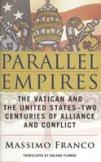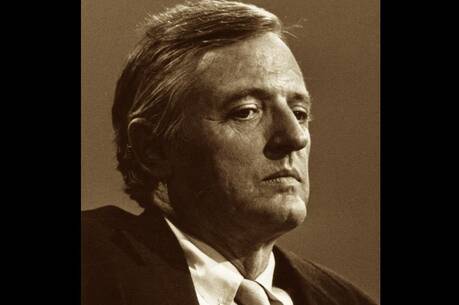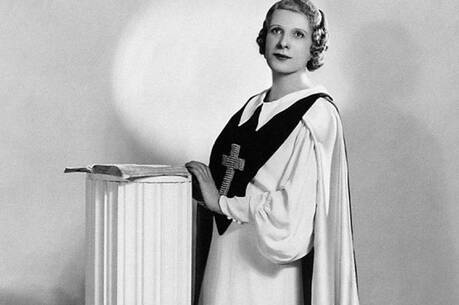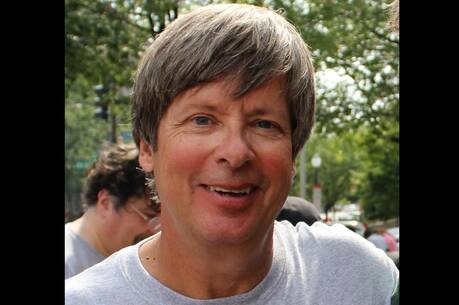Two Poles of Western Civilization
Massimo Franco, a distinguished columnist for the Corriere della Sera of Milan, presents an interesting thesis in this book, which he states in the introduction: “In probing the relationship between these two extremities of Western civilization—the United States at one end and the papacy at the other, it is also possible to find some lateral answers to other aspects of the equation involving Europe, and the very essence of the West itself.” The book’s 16 chapters are a sweeping survey of relations between the United States and the Holy See over the past 220 years.
Franco’s journalistic eye, however, is better than his historical one. His first and last chapters focus on the United States’ participation in the funeral of Pope John Paul II. For the first time in history, an American president attended a papal funeral. In fact, not only was George W. Bush present, but also Bill Clinton and George H. W. Bush. Jimmy Carter would also have liked to be included, but the American entourage was limited to five and room had to be left for Laura Bush and Condoleezza Rice. Franco contrasts the scene of three presidents in St. Peter’s with John F. Kennedy’s reluctance to arrive in Rome in the summer of 1963 in time for John XXIII’s funeral. He concludes his presentation with a chapter on “three presidents in Saint Peter’s Square,” in which he notes the groundbreaking action of an evangelical president in declaring a national period of mourning for the deceased pontiff, complete with flags flown at half-staff and the speculation in the Iranian press that Bush was meeting with the American cardinals to influence the conclave.
In between the first and last chapters on presidential participation in the papal funeral, Franco offers a series of vignettes to illustrate the earlier tension and efforts at rapport between the United States and the Vatican. In 1846 the United States established ministerial relations with the papal states in recognition of Pius IX’s reputed liberalism. Incidentally, the rank of minister rather than ambassador was not a slight, as the author implies, because the United States did not have ambassadors until the 1890s. He recounts the trip of Archbishop Gaetano Bedini to the United States in the winter of 1853-1854 amid protests, some of them violent, for his role in repressing the rebellion against papal rule in Bologna, but he omits the negative reaction to Bedini’s visit by the American bishops. Franco also reports that the U.S. Congress ended funding for the mission to the papal states in 1867, but fails to mention that the mission to Portugal also lost its funding because the American minister was critical of Radical Recon-struction, the Repub-lican Congress’ policy of treating the former Confederate states as conquered territories subject to numerous restrictions before they could be readmitted to the union.
While Franco successfully places the relations between the United States and the Holy See against the background of American anti-Catholicism, he (or his translator) becomes sloppy in presenting historical facts. He states, for example, that in 1939 Franklin Roosevelt “resumed the tradition of sending a personal representative” to the pope. In fact, Roosevelt invented the title for Myron C. Taylor as a substitute for establishing diplomatic relations that would have required Senate approval. The author likewise says nothing about the rude way in which Taylor’s “mission” was ended in 1950 without any notification to the Vatican. Nor does the author note the actual “resumption” of the personal representative to the pope by Richard Nixon in 1970 at the height of the Vietnam War, a practice continued by subsequent presidents until Ronald Reagan established full diplomatic relations.
One of the major drawbacks of Franco’s study is his virtual neglect of the American church, its people and hierarchy. In discussing the establishment of American-Vatican diplomatic relations in 1984, for example, he says nothing of Reagan’s motivation to rein in the American bishops, who had issued their pastoral letter The Challenge of Peace in May 1983, condemning the first use of nuclear arms; it said deterrence was tolerable only if it was leading to negotiations for disarmament. Some treatment of the American church is necessary, since most Europeans know that Catholics are a minority within the American population but are not aware that they still number 65 million in almost 200 dioceses.
One of Franco’s most informative chapters concerns Cardinal Pio Laghi’s mission to President Bush in 2003 to present the papal arguments against invading Iraq, when the former pro-nuncio to the United States was shabbily treated. Although Laghi narrated his experience to an Italian journalist, this is the first time, to my knowledge, that the story has appeared in English. Yet the ease with which the Holy See shifted from criticism of American policy in Iraq to what Franco sees as support of Bush over Senator John Kerry, a Catholic, remains problematic. Did the Vatican support Bush in the 2004 presidential election because of a coinciding interest or because leading bishops supported him—or opposed Kerry?
Unfortunately, Franco relied for much of his historical information on the unreliable work of Jim Nicholson, former chairman of the Republican National Committee, President George W. Bush’s ambassador to the Holy See and then secretary of veterans’ affairs. For instance, Franco accepts Nicholson’s statement that the Holy See consulted George Washington in 1788 to see if he had any objection to the pope naming a bishop in the United States. What actually happened? In 1783, at the time of the signing of the Treaty of Paris recognizing American independence, the cardinal prefect of Propaganda, the missionary arm of the pope, instructed the nuncio to Paris to ask the American minister, Benjamin Franklin, if his government had any objection to the appointment of a bishop. Franklin replied that religious matters were beyond the competence of his government, then operating under the Articles of Confederation. He nevertheless forwarded the request to the Congress, the president of which was James Madison, who seconded Franklin’s opinion. The American clergy then obtained permission to elect their bishop and chose John Carroll, who gained papal approval in 1789, the same year Washington took office.
Another error occurs on the meaning of “Holy See.” When treating the establishment of ministerial relations, Franco notes that the State Department instructed its diplomats that they were accredited to the pope as head of the Papal States and not as head of the church. He then paraphrases Nicholson’s argument that “to this day a fundamental distinction is made between the Holy See and the Roman Catholic Church to avoid confusion” that would arise if he had been accredited to the pope as the head of the Catholic Church. The Vatican, however, states: “The expression Holy See refers to the supreme authority of the Church, and thus the Pope as Bishop of Rome and head of the College of Bishops.” Whether Nicholson knew it or not, he, like other ambassadors to the Holy See, was accredited to the pope as head of the Catholic Church.
Despite these reservations, which might be due to the translation, Parallel Empires provides an important analysis and interpretation of Vatican-American relations from the viewpoint of a distinguished European observer. For most Americans, including many Catholics, the Vatican is a negligible, if not completely unknown, player on the world stage. This book furnishes a necessary corrective to that view.
This article also appeared in print, under the headline “Two Poles of Western Civilization,” in the March 23, 2009, issue.








